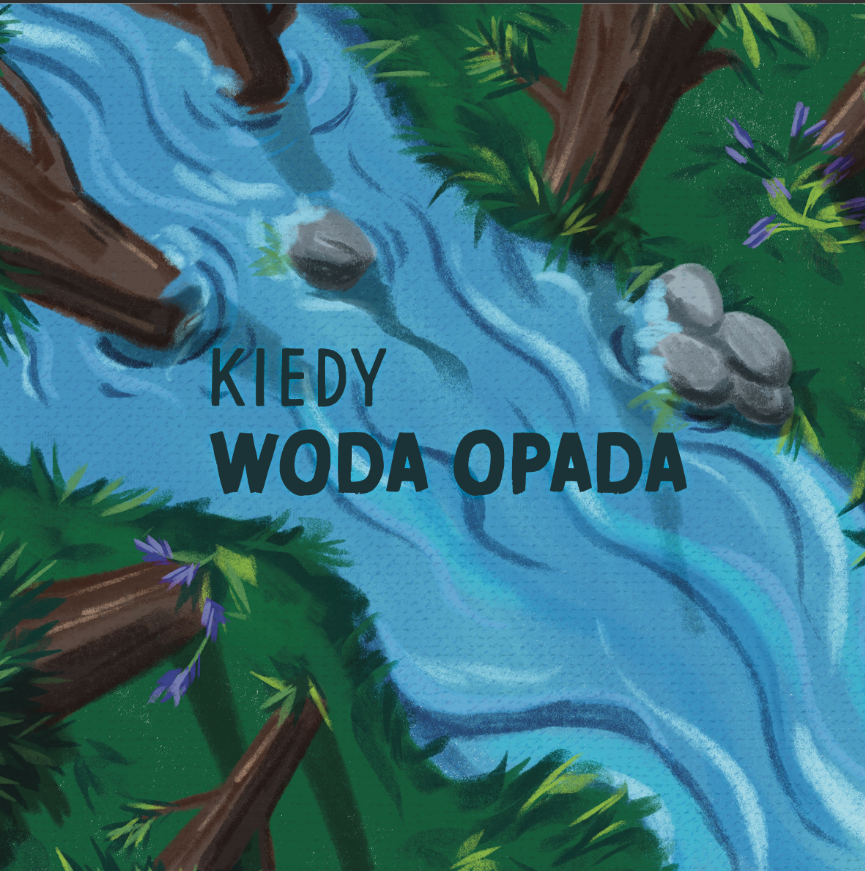
‘Kiedy woda opada’ – A therapeutic fairy tale for children who have experienced flooding
The flooding in south-western Poland is over, but its effects persist. It is not only destroyed roads, bridges or houses, but also fear, sadness, anger or helplessness that have remained in the psyche of many people. With the youngest children in mind, experts from the University of Wrocław and SWPS University have developed a therapeutic fable to help children get through this difficult time.
The therapeutic fairy tale ‘Kiedy woda opada’ is a joint work of researchers, graduates and students from the SWPS University in Wrocław and researchers from the University of Wrocław. It is intended for younger school children. Using the example of pupils in a certain class, it tells about the different experiences and feelings associated with flooding.
– Reading fairy tales together helps to lower anxiety, tame new situations and difficult emotions. Listening to or making up stories that show how the characters deal with problems gives children the opportunity to identify with the characters and reflect on their own emotions – says the co-author of the fairy tale, prof. Justyna Ziółkowska, a psychologist from SWPS University in Wrocław.
In the fairy tale, the children tell what emotions they experience after the flood. This could be, for example, fear that the situation will be repeated, sadness or anger. The authors, who previously developed the guide ‘Jak rozmawiać z dziećmi o powodzi’’ https://uwr.edu.pl/en/how-to-talk-to-children-about-flooding-a-guide-has-been-created/, advise encouraging children to describe their emotions while reading.
For example, you could ask: ‘How do you think this character feels now?’, ’Have you ever felt the same way? What helped you then?’. If the child is ready, you can try to relate the hero’s situation to that of the child. Instead of suggesting solutions, you can ask: ‘What do you think the protagonist could have done to be less afraid?’ or ‘How would you have coped in such a situation?’.
Young readers will also find some simple ways in the fable that can help them cope with the emotions they face after a flood. These include, for example, breathing exercises. The lady asked Julka and all the children to imagine a balloon in their stomachs. – ‘Imagine,’ she added, ‘that when you take a deep breath in, the balloon fills with air. You hold the air for 1…, 2…, 3… and slowly exhale. Exactly as if the balloon is deflating,’ reads the fable. Another way is to imagine a hiding place where the child feels safe. Joint activities, such as preparing parcels for those affected, can also help.
– We wrote this fairy tale knowing that it would be ready when the floods started to disappear from the media, yet the problems of those affected have not disappeared. In fact, they are only just beginning. This is especially true for children – notes prof. Dariusz Galasiński from the Institute of Journalism and Social Communication at the University of Wrocław. – Our work on the fairy tale stems from our conviction that the university has an important social role to play. We are not only there to create knowledge, but perhaps above all to work for the benefit of the communities in which we function. We have all worked with a deep sense that both a guide on how to talk to children about the flood and a therapeutic fairy tale will, at least to some extent, help to bring smiles back to the faces of the little ones.
The publication, illustrated by Marta Siennicka, can be downloaded free of charge from the university’s website [LINK].
There are also plans to print the fairy tale and distribute it in the regions affected by the floods.
The originators and team leaders are: prof. Justyna Ziółkowska, Faculty of Psychology in Wrocław, SWPS University; prof. Dariusz Galasiński, Institute of Journalism and Social Communication, University of Wrocław; prof. Tomasz Grzyb, Faculty of Psychology in Wrocław, SWPS University. The content of the fairy tale was created by students and graduates of psychology studies from the Wrocław Faculty of Psychology, USWPS, under the supervision of psychologist Karolina Matczak, creator of the Niezłe Klocki brand. The linguistic consultation of the fairy tale’s content was carried out by dr hab. Tomasz Piekot from the Centre for Simple Polish at the University of Wrocław. The illustrations were created by Marta Siennicka, a graduate in graphic design from Wrocław’s SWPS University. The graphic design and typesetting of the fairy tale was the responsibility of dr Małgorzata Ciesielska from the Graphics Department of the USWPS in Wrocław.
Press release from UWr and SWPS University



